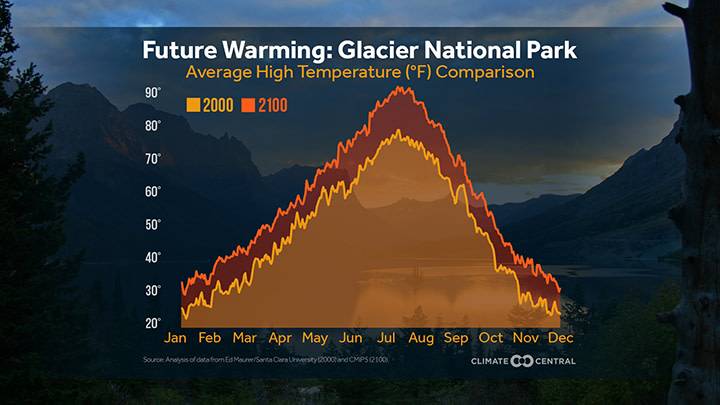As the National Park Service celebrates its centennial this week, we follow up on our earlier analysis of National Park temperature trends with a look ahead at temperature projections. Most parks have seen their average temperatures rise in their first century, and as greenhouse gas emissions continue to climb, more warming is expected during the next century. Acknowledging the reality of climate change, NPS Director Jonathan Jarvis calls climate change "the biggest challenge the NPS has ever faced.” Follow the linked graphic above to see the trends and projections in your favorite park.
According to Jarvis, park ecosystems do not recover from wildfires as they did in the past, new species are arriving in the parks as habitable zones shift, and sea level rise is altering barrier islands, coastal marshes, and cultural resources. As a result, some of the most iconic parts of the parks will be lost. Glacier National Park is a stunning example; only 25 of its original 150 glaciers still exist today. Scientists project they will disappear entirely in 15 years.
See the full interactive here >>
METHODOLOGY
Daily maximum temperature projections were calculated using the median of 29 spatially downscaled climate models (CMIP5) at 1/8 degree scale, then averaged within boundaries expanded by a 30-kilometer buffer over the period 2080-2099. Projections assume greenhouse gas emissions continue at their current rate (RCP 8.5). The 2000 average daily maximum temperature was calculated using a gridded oberservational data set by Ed Maurer of Santa Clara University.
